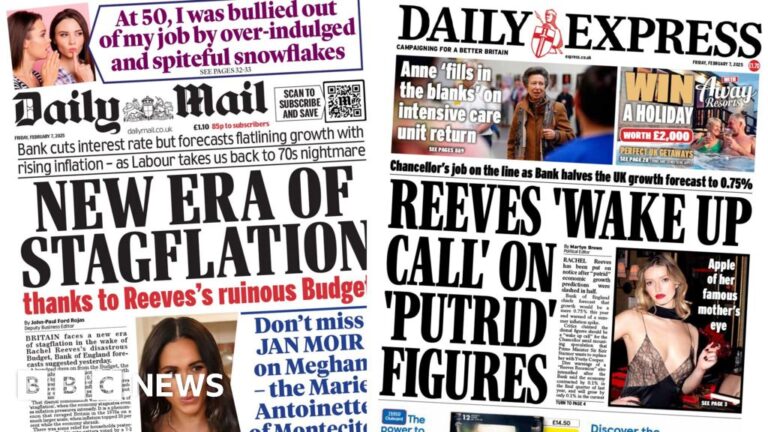New Era of Stagflation: Putrid Figures for Reeves
In recent years, the global economy has been hit by various challenges, leading many to believe we are entering a new era of stagflation. This term, first coined in the 1970s, refers to the combination of stagnant economic growth, high unemployment, and rising inflation. As recent economic data emerges, it becomes increasingly evident that this phenomenon is resurfacing, drawing attention to the concerning figures related to key economic indicators.
Understanding Stagflation
Stagflation poses a significant challenge for policymakers. Traditional monetary and fiscal policies that might boost growth or reduce inflation may not be effective under these conditions. The U.S. might be experiencing sluggish GDP growth, reported at an annualized rate of just 1.1% for the first quarter of the year, along with a Consumer Price Index (CPI) rising by 5.4% year-over-year as of September 2021. The dual pressures of inflation and stagnation create a complex economic environment.
The UK is similarly suffering, as Chancellor of the Exchequer, Rachel Reeves, faces "putrid" figures in the latest economic assessments. Critics have pointed to an alarming trend of sluggishness in the British economy, with GDP growth predictions being consistently downgraded.
Economical Pulse and Its Implications
What do these troubling figures mean for the average citizen? Inflation translates directly into increased costs for everyday goods and services. For instance, in September 2023, food prices surged by 9.1%, reflecting the pressure on households grappling with rising bills. As wages stagnate—currently showing an increase of 3.5% annually—the purchasing power diminishes, leaving consumers feeling the squeeze.
The rise in unemployment exacerbates the situation, with the jobless rate creeping back up to levels not seen since before the pandemic. Lower job security leads to reduced consumer confidence, making it more challenging for businesses to thrive. With companies hesitant to invest in expansion and operations, the economy risks falling further behind.
Policy Response and Future Outlook
To navigate this challenging landscape, the UK government must consider more robust measures to stimulate growth while tackling inflation. Interest rate hikes may be a necessary evil but could stifle consumer spending and investment essential for revitalizing the economy.
In October 2023, the International Monetary Fund (IMF) projected global GDP growth will slow to 2.8% in 2024, highlighting the urgency for proactive steps. Reevaluating fiscal policies and redistributing resources effectively will be key to turning around the perceived "putrid" economic trends that plague the UK.
Statistics indicate that countries that embrace structural reforms, promote innovation, and invest in job creation tend to emerge stronger from stagflation episodes. For instance, Germany managed to rebound robustly and stabilize its economy post-1980s stagflation through targeted investments in technology and education.
Conclusion
As we find ourselves facing a new era of stagflation, it is clear that pressing economic challenges await governments and policymakers. The "putrid" figures for Rachel Reeves have ignited debates surrounding effective economic strategies. By learning from historical precedents and understanding the multifaceted aspects of stagflation, a path to recovery can be forged, restoring confidence for consumers and businesses alike.
In this evolving economic landscape, stakeholders must unite, aiming for sustainable growth that curtails inflation while simultaneously addressing the stagnation that hampers opportunities for millions. The time for decisive action is now—only through a cohesive strategy can the UK hope to reverse its fortunes and pave the way for a prosperous future.






